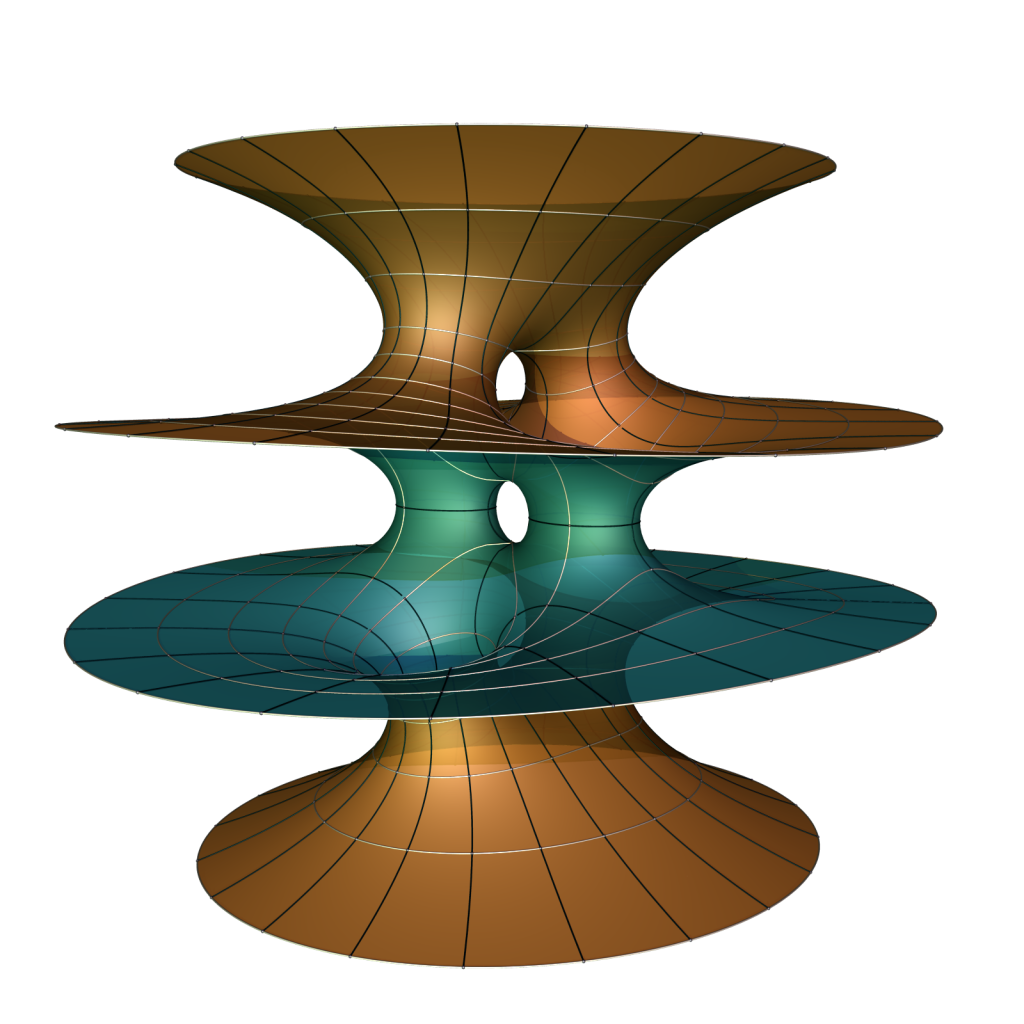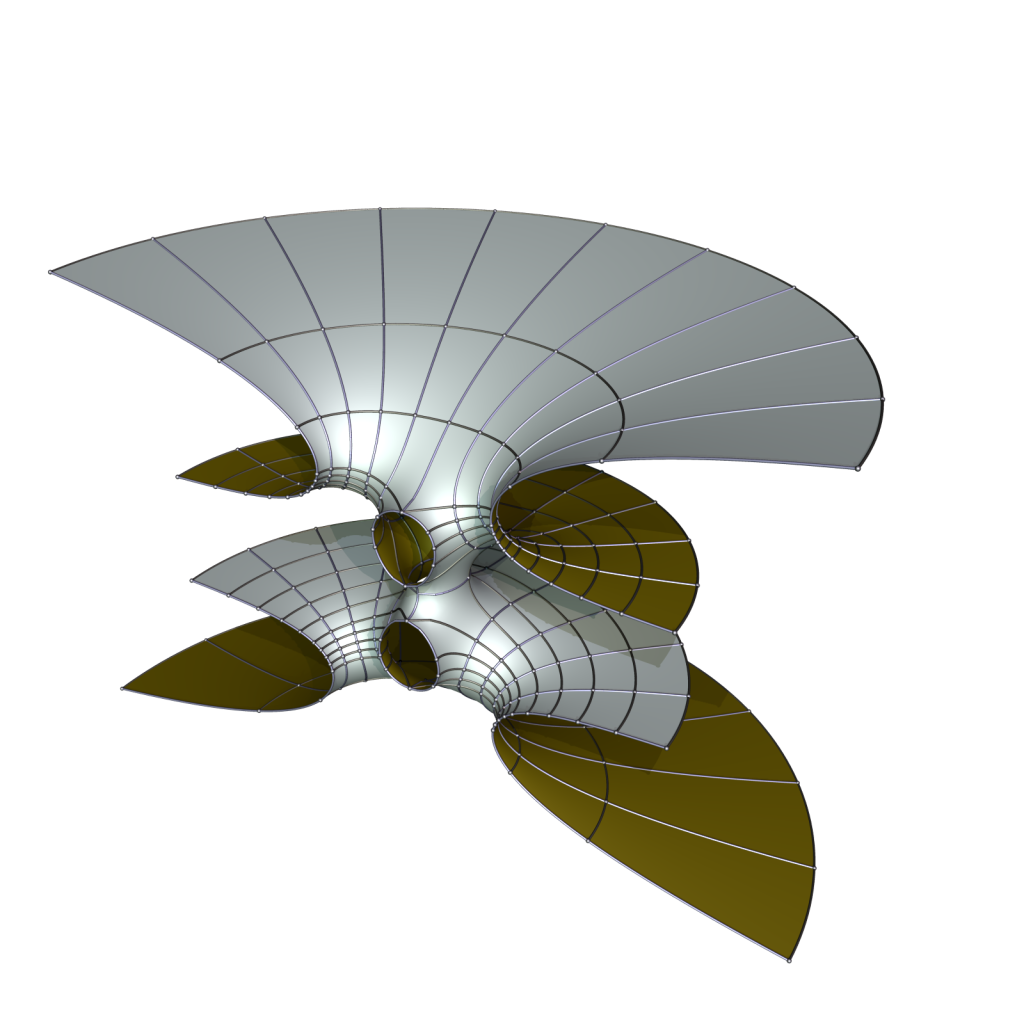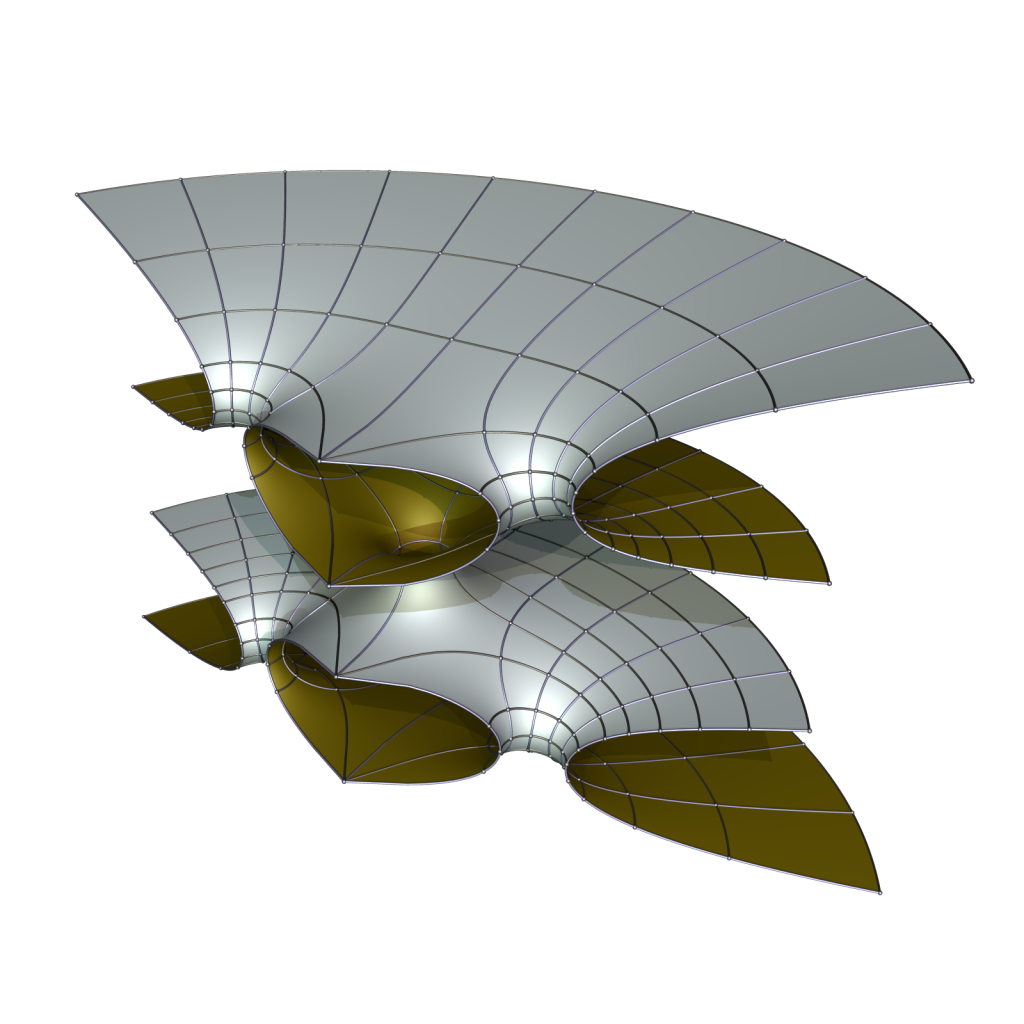Wohlgemuth was able to add a handle to his 4-ended Costa-Wohlgemuth surface of genus 2, increasing the genus to 3:

Surprisingly, attempts to increase the dihedral symmetry of this surface fails. To see what happens, note that the surface above has the vertical coordinate planes as symmetry planes. Half of the surface looks like this:

This corresponds to the dihedral symmetry k=2, where the two vertical planes make angle π/2. We can try to change the angle to π/k. Below you see the surface pieces for k=2.5 and k=2.9:


We would like to reach k=3, so that the surface becomes closed. However, this is what it looks like for k=2.999, after solving the 3-dimensional period problem

I don’t believe the periods are correctly closed and that the surface in fact doesn’t exist for k=3. For larger values of k I wasn’t able to solve the period problem at all.
This raises a general question: Given a minimal surface with dihedral symmetry k at k vertical planes, can the piece of the surface between the planes be deformed into a surface with free boundary in two planes making an angle of π/k?
The general believe has been that if a surface exists for some k, a deformation exists for all larger k. This example puts this into doubt.
Resources
Mathematica Notebook and higher symmetry
PoVRay Sources and for higher symmetry
M. Wohlgemuth: Vollständige Minimalflächen höheren Geschlechts und endlicher Totalkrümmung, Dissertation, Bonn, 1993.
M. Wohlgemuth: Minimal Surfaces of Higher Genus with Finite Total Curvature, Arch. Rational Mech. Anal. 137 (1997) 1–25